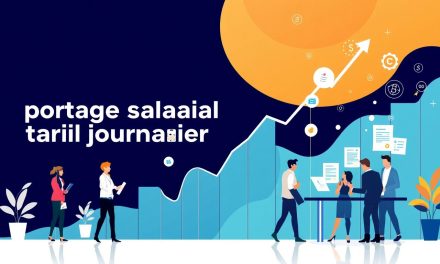Picture this: You’ve traded office politics for flexible hours and swapped commutes for coffee-shop creativity. But as empowering as independent work feels, it’s not always sunshine and productivity. The reality? Building a thriving career outside traditional structures demands more than talent—it requires grit, strategy, and support.
By 2028, over 90 million Americans will embrace self-employment, according to Statista. This seismic shift reflects a global reimagining of what work means. Yet, while autonomy fuels passion, it also introduces hurdles like unpredictable income, isolation, and navigating legal frameworks designed for traditional roles.
We’ve seen firsthand how professionals like you juggle client demands while managing taxes, contracts, and personal branding. The industry’s rapid growth hasn’t yet bridged the gap between opportunity and stability. That’s why we’re here—not just to highlight problems, but to provide actionable solutions that transform obstacles into stepping stones.
This guide isn’t about sugarcoating the journey. It’s about equipping you with tools to build resilience, master business fundamentals, and create sustainable success. Because your career deserves both freedom and security.
Table of Contents
Key Takeaways
- Independent professionals are projected to grow by 60% in the next decade
- Traditional systems often lack support for non-employee work structures
- Business management skills are as vital as technical expertise
- Personal branding directly impacts client acquisition and retention
- Strategic planning reduces financial unpredictability
- Community support counteracts professional isolation
Introduction: Embracing the Freelance Lifestyle
Gone are the days when careers followed predictable paths. Today’s professionals craft their own journeys through evolving work models that prioritize autonomy. This shift brings exciting possibilities – but demands fresh strategies for sustainable success.
Redefining Professional Engagement
The global workforce now values project-based flexibility over rigid office schedules. Traditional employment security has transformed into dynamic collaborations where skills determine opportunities. Over 42% of French professionals consider self-employment viable, according to recent labor market analyses.
Three critical differences define modern career paths:
| Aspect | Traditional Work | Independent Work |
|---|---|---|
| Income Flow | Fixed monthly | Project-based |
| Skill Growth | Role-specific | Multi-industry |
| Networking | Internal teams | Cross-sector connections |
Building Your Professional Foundation
Successful transitions require more than technical expertise. Financial planning and client management become daily priorities. Our career development framework helps professionals master these essentials.
Key preparation steps include:
- Mapping financial safety nets
- Creating dedicated work spaces
- Establishing peer support networks
Remember: Sustainable independence balances creative freedom with structured business practices. The right preparation turns professional aspirations into achievable daily workflows.
Freelance Industry Trends and Opportunities

The professional landscape now thrives on adaptability. Over 57 million Americans already choose project-based work, with Statista predicting 90 million self-employed professionals by 2028. This evolution reshapes how businesses access expertise and how professionals structure their careers.
Market Growth and Future Outlook
Creative fields and tech sectors lead the charge, but consulting and specialized services show equal momentum. Companies increasingly view skilled freelancers as strategic partners rather than temporary help. This shift drives longer contracts and higher project values across industries.
Remote work tools erase geographic limits, letting professionals collaborate globally while maintaining local roots. Over 60% of French businesses now hire remote specialists for niche projects. This accessibility fuels growth in smaller cities and rural areas.
Emerging technologies create fresh opportunities in AI implementation and sustainable business practices. Professionals who master these areas position themselves for recurring work. The key lies in aligning skills with market needs while building relationships that transcend single projects.
As traditional employment models evolve, independent work becomes a cornerstone of modern economies. Those who navigate this shift strategically will find abundant opportunities to craft meaningful, sustainable careers.
Overcoming Freelance Challenges: Top Strategies and Insights
Building a thriving independent career requires more than talent—it demands smart systems to address recurring hurdles. Let’s explore solutions that turn common pain points into growth opportunities.
Identifying Key Issues Faced by Freelancers
Four core areas dominate independent professionals’ concerns:
| Challenge Category | Common Issues | Impact Level |
|---|---|---|
| Financial Management | Late payments, tax complexity | High |
| Client Relations | Scope creep, unclear contracts | Moderate-High |
| Operational Efficiency | Time tracking, admin overload | Moderate |
| Work-Life Balance | Burnout, blurred boundaries | High |
Practical Advice for Navigating the Obstacles
Implement these proven methods:
- Automate financial workflows: Use accounting software for invoicing and tax estimates
- Create contract templates: Define project scope and payment terms upfront
- Batch administrative tasks: Dedicate specific days to non-client work
For French professionals, adopting effective work organization strategies proves critical. One survey shows specialists using structured systems recover 11+ hours monthly—time better spent on income-generating activities.
Remember: Prevention beats crisis management. Establish clear client communication protocols and financial buffers early. These steps create stability, letting you focus on delivering exceptional services.
Mastering Client and Project Acquisition

The art of attracting quality clients separates thriving professionals from those stuck in feast-or-famine cycles. Sustainable growth demands intentional strategies that blend human connections with digital visibility.
Building and Leveraging Your Network
Your professional network acts as both radar and amplifier. Focus on value-first engagement at industry events and online forums. Share insights, connect collaborators, and position yourself as a resource. This approach builds trust that converts contacts into clients.
One French marketing consultant tripled her projects by joining niche LinkedIn groups. « I stopped pitching services, » she explains. « Instead, I answered specific questions – clients started reaching out. »
Effective Use of Social Media and Referrals
Platforms like LinkedIn and Instagram become portfolio showcases when used strategically. Share behind-the-scenes project snippets with captions highlighting solutions. This demonstrates expertise without direct sales pitches.
Three steps to optimize referrals:
- Create clear guidelines for ideal client profiles
- Automate testimonial collection with post-project surveys
- Offer referral incentives aligned with client relationship best practices
Block 2-3 weekly hours exclusively for outreach. Treat business development like client work – track metrics and refine approaches. Remember: Consistent visibility combined with targeted networking creates predictable project pipelines.
Setting Competitive Rates and Pricing Your Projects
Determining your worth in the independent market requires equal parts strategy and self-awareness. Pricing isn’t just about covering costs—it’s about aligning your expertise with client outcomes while maintaining financial health.
Balancing Income, Value, and Market Trends
Successful professionals treat pricing as dynamic math. Consider three core elements:
| Factor | Consideration | Action Step |
|---|---|---|
| Market Position | Industry benchmarks | Analyze 5 competitors |
| Value Delivery | Client ROI potential | Quantify results |
| Time Investment | Project hours + admin | Track actual effort |
French specialists using value-based pricing report 23% higher retention than hourly chargers. This approach shifts focus from time spent to problems solved.
Negotiation Tactics for Maximizing Earnings
Confidence in your rates begins with preparation. Develop a value justification script highlighting:
- Past client success metrics
- Specialized training/certifications
- Exclusive methodologies
When clients question rates, anchor discussions around deliverables: « This strategy typically generates €15K+ in annual savings for similar clients. » This frames pricing as investment rather than expense.
Remember: Your rates reflect both current skills and future growth. Annual reviews ensure alignment with evolving expertise and market shifts.
Streamlining Administrative, Legal, and Financial Tasks
Behind every successful independent career lies an organized foundation. Efficient systems transform chaotic paperwork into strategic assets, freeing time for meaningful work. Let’s explore methods to simplify essential backend operations.
Best Practices in Bookkeeping and Invoicing
Automation tools like QuickBooks and FreshBooks cut administrative hours by 40% for French professionals. Implement these three rules:
- Record transactions within 24 hours
- Separate business/personal accounts
- Use numbered invoices with payment deadlines
Monthly financial reviews spot cash flow patterns. One graphic designer reduced tax preparation time from 12 hours to 90 minutes using expense-tracking apps.
Managing Contracts, Taxes, and Insurance
Standardized contract templates prevent 78% of client disputes, according to legal experts. Essential clauses include:
| Contract Element | Purpose |
|---|---|
| Termination Terms | Protects against abrupt cancellations |
| Payment Schedule | Ensures predictable income |
| Intellectual Property | Clarifies ownership rights |
For French tax compliance, quarterly VAT declarations and URSSAF payments require attention. Professional liability insurance shields against client lawsuits, while health coverage maintains stability during slow periods.
Partnering with specialized accountants ensures compliance without diverting focus from core services. Remember: Systems built today create tomorrow’s freedom.
Balancing Work-Life and Managing Time Effectively
Mastering the art of separation between professional responsibilities and personal life becomes crucial for long-term success. Independent professionals often struggle with overwork—47% report difficulty disconnecting after hours. Structured routines transform flexibility from a liability to an asset.
Establishing Clear Boundaries and Work Hours
Define non-negotiable work blocks using calendar tools. Communicate availability upfront in client contracts. A French web developer shared: « My 9 AM–5 PM policy reduced after-hours requests by 80%. »
| Boundary Strategy | Implementation | Result |
|---|---|---|
| Separate Devices | Work phone for client communication | 70% fewer interruptions |
| Visual Cues | Closed-door policy during focus hours | 23% productivity boost |
| Auto-Responders | Set email reply windows | 34% stress reduction |
Strategies to Boost Productivity and Maintain Health
Time-blocking techniques help maximize output. The Pomodoro method increases task completion rates by 40% for many professionals. Pair work intervals with physical activity—stretch breaks improve circulation and focus.
Essential health practices include:
- 15-minute morning mobility routines
- Meal-prepping nutrient-dense lunches
- Scheduled digital detox periods
Our structured approach to work-life balance combines these elements into sustainable daily habits. Remember: Protecting personal time enhances professional performance—quality work requires quality rest.
Building a Strong Freelance Business and Personal Brand
Your digital footprint now serves as your storefront and business card combined. In France’s competitive market, professionals blending strategic visibility with authentic storytelling secure 68% more recurring projects than those relying solely on referrals.
Establishing a Professional Online Presence
Start with a clean portfolio site showcasing 3-5 signature projects. Include client logos, measurable outcomes, and process breakdowns. Consistency matters—use matching visuals and tone across LinkedIn profiles, industry forums, and niche platforms like Malt.
French designers using video case studies report 40% faster client conversions. Pair this with regular value-driven content addressing common pain points in your field. A biweekly newsletter analyzing industry shifts positions you as a go-to resource.
Leveraging Testimonials and Case Studies
Client feedback transforms abstract skills into tangible results. Structure testimonials around specific challenges: « Marie streamlined our invoicing process, recovering 15 hours monthly » resonates more than generic praise.
Develop 3-5 detailed case studies using this framework:
- Client’s initial obstacle
- Your tailored solution
- Quantifiable business impact
Share these success stories through LinkedIn articles and email campaigns. Remember: Your professional network grows when you create space for others’ voices to validate your expertise.
FAQ
How do I find reliable clients as a self-employed professional?
Focus on building a strong professional network through platforms like LinkedIn and industry events. Leverage social media to showcase your expertise with case studies or client testimonials. Referrals from satisfied customers often yield high-quality leads.
What’s the best way to set competitive rates for my services?
Research industry benchmarks using tools like PayScale or Glassdoor. Factor in your experience, project complexity, and regional cost differences. Consider value-based pricing for specialized skills rather than hourly rates to maximize earnings.
How can I manage irregular income streams effectively?
Create a financial buffer by saving 20-30% of each payment for lean periods. Diversify your client base to avoid over-reliance on one source. Use accounting software like QuickBooks to track cash flow and forecast earnings.
What strategies help maintain work-life balance with flexible hours?
Establish fixed work hours and communicate them clearly to clients. Designate a dedicated workspace to separate professional and personal life. Tools like Toggl Track can monitor productivity while ensuring time for health and family.
How do I handle legal or tax obligations without an employer?
Consult a CPA for tax planning and quarterly estimated payments. Use contract templates from platforms like LegalZoom or Docracy. Always secure liability insurance tailored to your industry to mitigate risks.
What’s the most effective way to build credibility as a new independent worker?
Develop a polished portfolio website showcasing projects and client feedback. Publish thought leadership content on Medium or industry forums. Partner with established brands for smaller projects to gain verifiable experience.





